When Steve Jobs launched the first-ever iPhone model, no one knew how far Apple would come by 2024. Be it LIDAR, better cameras, a secure operating system, or quality, Apple iPhones have excelled and continue to do so. In this article, we take you back to the giant tech journey of every iPhone ever launched since 2007, the list of all iPhone Models till 2024.
Apple’s simplicity is what makes it stand out, and it is wanted by more people. In the recent Apple event, Apple also showed how powerful iPhones have become with iOS 18 and user-intent-based usage. The introduction of Apple Intelligence, the more interconnected usability of Siri, and many more features have made the iPhone more powerful than before. No doubt, Apple’s collaboration with ChatGPT has now eliminated the need for several notes, reminders, and search apps; it’s all on your iPhone and your command. With iOS 18, Apple has also introduced a change in their UI, a more intrusive controlled center, and more options with the dark interface. But that’s all software.
iPhone’s hardware has also improved a lot; you can now play certain PC games on your iPhone, such as Assassins Creed, or connect a PS controller (Get Best Deal) and have all the fun. The GPU engines have become a lot more capable, and we can expect more improvement with the new iPhones launching in September 2024. We will talk more about the cameras, hardware, and software with each model for a better understanding.
Also Read: The Best Wireless Charger for iPhone: Cut the Cord
List of iPhone Models: Every Single iPhone Since 2007
From the first iPhone to the iPhone 15 Pro Max, Apple has gone from a slow change to a rapid hit. One of the things about the iPhone is you may get a certain feature 2-5 years later than what the Android launched, but it is much steadier and better. For instance, the dynamic display island has been around for quite a time on Chinese phones, but only recently, with the iPhone 14 Pro, the feature was introduced on iPhones. But, a lot better, steadier, and available to more apps.
So, it is safe to say Apple may be late to a certain feature, but when it does, it tries to do a lot better.
There is a lot to talk about regarding the iPhone and iPad, but let us now jump right in with the list of every single iPhone model launched ever since 2007 in chronological order.
1. iPhone

Specifications
- Camera: 1.9 Megapixels (Rear)
- Storage: 4/8/16 GB
- Battery: 1400 mAh
- RAM: 128 MB
- Processor: S5L8900 (Core Design: ARM1176 x 1, CPU Speed: 400 MHz)
The first-ever iPhone, the iPhone (aka First Generation iPhones), was one of the biggest hits. Launched in January 2007 and first available in the United States in June 2007, Apple made history. The device pictured fewer buttons and clutter to make it the best among its competitors. The first-generation iPhones were priced at $499 for a 4GB model and $599 for an 8GB model; a 3.5-inch diagonal screen size, a 2-megapixel camera, and sync with mail, notes, and bookmarks.
2. iPhone 3G
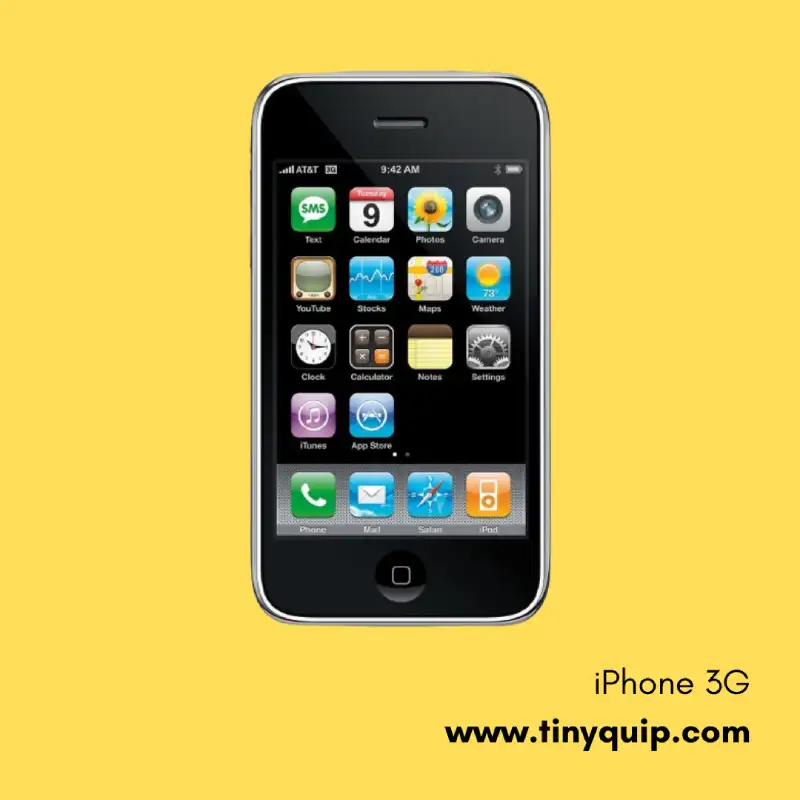
Specifications
- Camera: 1.9 Megapixels (Rear)
- Storage: 8/16 GB
- Battery: 1500 mAh
- RAM: 128 GB
- Processor: S5L8900 (Core Design: ARM1176 x 1, CPU Speed: 412 MHz)
The next iPhone model on our list is the iPhone 3G launched a year after the first-ever iPhone. iPhone 3G made a significant impact in the mobile phone industry; it was the first phone to bring GPS into smartphones. The iPhone 3G resembled a lot like the first iPhone, with no extra clutter, the improvements were UI-based, and Apple also launched the IOS App Store for the very first time.
Also Read: Move to iOS: Android to iPhone Transfer without Resetting
3. iPhone 3GS

Specifications
- Camera: 3.1 megapixels (Rear) / 480p 30[3] video
- Storage: 8/16/32 GB
- Battery: 1219 mAh
- RAM: 256 MB
- Processor: S5L8920 (Core Design: ARM Cortex-A8 x 1, CPU Speed: 620 MHz)
From the beginning, Apple believed in making improvements to their iPhone devices. The “iPhone 3Gs” was a successor of the iPhone 3G with the same screen size and improved hardware specifications. One of the major changes that Apple made was the voice-control ability. What is now known as Siri was not Apple’s first voice control; it had a precursor of Siri that made the iPhone 3Gs stand out among its competitors. Besides, Apple also resolved one of the bigger user-based problems: the fingerprint marks. Since iPhones were some of the first mobile devices with a maximum touchscreen, users faced many problems with fingerprints. Apple solved this problem with oleophobic coating.
4. iPhone 4

Specifications
- Camera: 0.3 Megapixels (Front) / 5.0 Megapixels (Rear)
- Storage: 8/16/32 GB
- Battery: 1419 mAh
- RAM: 512 MB
- Processor: S5L8930 “A4” (Core Design: ARM Cortex-A8 x 1, CPU Speed: 800 MHz)
The next device in our iPhone Models List is the appealing iPhone 4, launched in 2010. By the launch of the iPhone 4, Apple realized the need for the front camera and introduced it in the iPhone 4, which also featured a bigger screen size. The iPhone 4 was also one of the slimmest mobile devices in 2010, a smart move by Apple. Some of the other significant improvements include better noise quality (Dual Mics) and VGA resolution.
Also Read: How to Transfer Photos Between iPhone and Android | Quickest Way
5. iPhone 4S
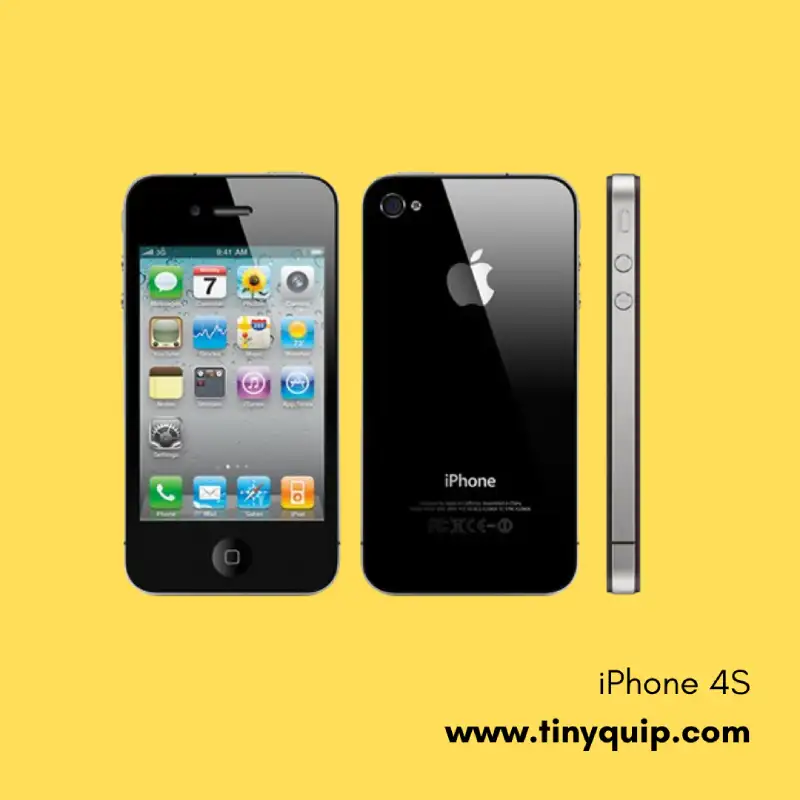
Specifications
- Camera: Front: 0.3 MP VGA (480p) – Introduction to FaceTime Camera, Rear: 8.0 MP 1080 | 30fps)
- Storage: 8/16/32/64 GB
- Battery: 1432 mAh
- RAM: 512 MB
- Processor: S5L8940 “A5” (Core Design: ARM Cortex-A9 x 2, CPU Speed: 800 MHz)
There were not many changes with the iPhone 4s that made it look different from the iPhone 4, but it was definitely how it works and the performance. With the iPhone 4s, Apple was the first-ever mobile device that launched the 1080p to the rear camera. Besides, the iPhone 4s was one of the fastest-selling mobile devices of its time before the next generation of iPhones, the iPhone 5, which made some bigger changes to the iPhone.
6. iPhone 5

Specifications
- Camera: Rear: 8-Megapixels, Front: 1.2-Megapixels
- Storage: 16/32/64 GB
- Battery: 1434 mA
- RAM: 1 GB
- Processor: S5L8950 “A6” (Core Design: Swift x 2, CPU Speed: 1.2 GHz)
With four elements: lens, illuminated sensor, three mics (for better noise cancellation), and IR filter, the iPhone 5 was one of the biggest redesigns of the iPhone lineup. The iPhone 5 also had one of the biggest changes in the broadband industry, the introduction of 4G and a 16:9 aspect screen ratio. This update to the iPhone models list was also significant because Apple improved the RAM capacity to 1 GB and CPU speed to 1.2 GHz; these were some of the first few steps to pace the mobile industry.
Also Read: How to Disconnect an iPhone from your Mac | 11 Things to Do
7. iPhone 5C
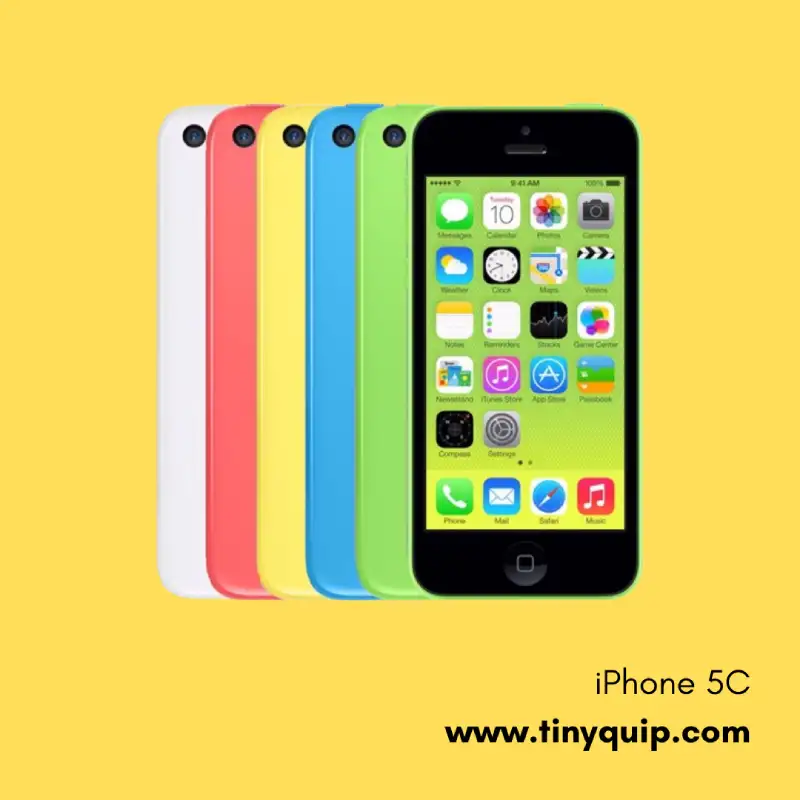
Specifications
- Camera: Rear: 8.0 megapixels, Front: 1.2 megapixels
- Storage: 16/32/64 GB
- Battery: 1508 mAh
- RAM: 1 GB
- Processor: S5L8950 “A6” (Core Design: Swift x 2, CPU Speed: 1.2 GHz)
iPhone 5C didn’t have many hardware or software upgrades, but it was an innovative step. With iPhone 5C, Apple broke the Black and White mobile stereotypes and introduced colourful iPhones that were visually appealing. Additionally, the iPhone 5C was priced lesser than the earlier models to make it more available to common hands.
8. iPhone 5S

Specifications
- Camera: Rear: 8.0 megapixels, Front: 1.2 megapixels
- Storage: 16/32/64 GB
- Battery: 1508 mAh
- RAM: 1 GB
- Processor: S5L8960 “A7” (Core Design: Apple Cyclone x 2, CPU Speed: 1.3 GHz)
With the iPhone 5S, Apple’s innovative step was to change how the authentication system works. Apple made the home button work like a fingerprint sensor and changed the way one unlocks their iPhone. I believe, still, a lot of users love the fingerprint sensor and want it back on their iPhones; it is quick, efficient, and also much more secure. No doubt, there are a few Tech YouTubers that have cracked the fingerprint sensor.
iPhone 5S was a turning point for Apple, which landed it in a more premium and trusted phone category. It was the first smartphone with a 64-bit system.
9. iPhone 6

Specifications
- Camera: Rear: 8.0 megapixels, Front: 1.2 megapixels
- Storage: 16/64/128 GB
- Battery: 1809 mAh
- RAM: 1 GB
- Processor: T7000 “A8” (Core Design: Apple Typhoon x 2, CPU Speed: 1.38 GHz)
With the iPhone 6, Apple completely redesigned its Apple iPhone lineup; the iPhone 6 was relatively larger (6.9mm Screen Size), curvy, and had better redesigned, normalizing the power button to the side of the iPhones and powerful IOS. With more advanced processors and cameras, Apple made significant changes to their iPhone models list. In fact, the iPhone 6 lineup is still loved by Apple users who have owned it in those times.
Also Read: 7 Best Third-Party App Store Alternatives | iOS
10. iPhone 6 Plus
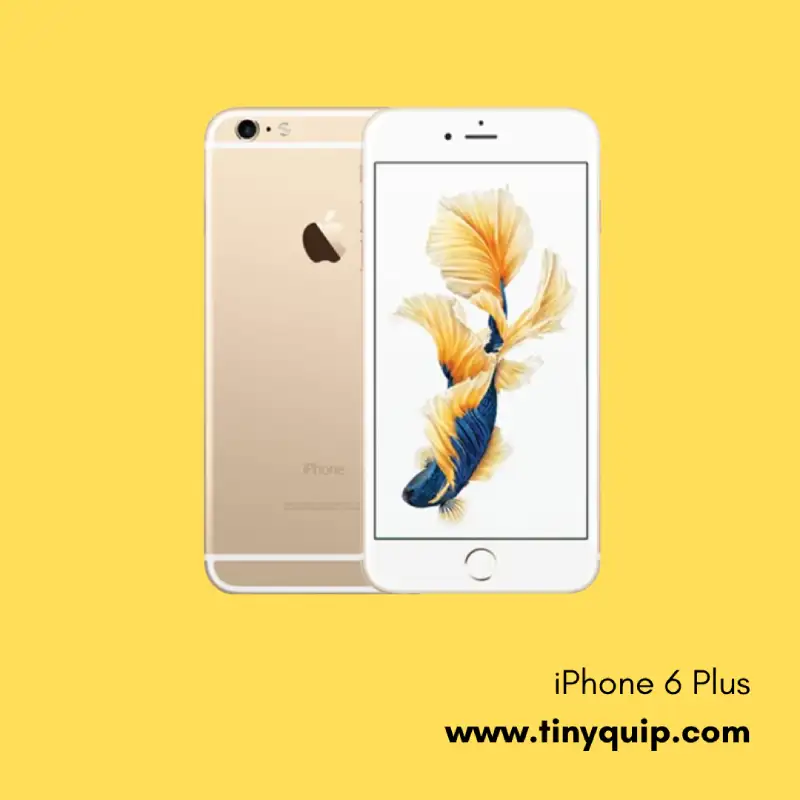
Specifications
- Camera: Rear: 8.0 megapixels, Front: 1.2 megapixels
- Storage: 16/64/128 GB
- Battery: 2906 mA
- RAM: 1 GB
- Processor: T7000 “A8” (Core Design: Apple Typhoon x 2, CPU Speed: 1.38 GHz)
With the iPhone 6, Apple realized the demand for smartphones with bigger screen sizes, hence the iPhone 6 Plus. iPhone 6 Plus also introduced better camera optimizations, stability, and noise reduction. It was larger in size, and there weren’t other changes in looks compared to the iPhone 6.
11. iPhone 6S

Specifications
- Camera: Rear: 12.2 megapixels, Front: 5 megapixels
- Storage: 16/64/128 GB
- Battery: 1715 mA
- RAM: 2 GB
- Processor: S8000 and S8003 “A9” (Core Design: Apple Twister x 2, CPU Speed: 1.85 GHz)
Apple shifted from the label “mobile device” to a smart device with the introduction of the iPhone 6S. With 70% faster CPU power and 60% improved GPU performance, Apple built the iPhone 6S from scratch with core technologies and new materials. The aluminum mixed body, new UI, powerful A8 processors, and new features made it huge. I think theiPhone 6S is a significant addition to the list of iPhone models ever released since 2007. In fact, I still love it so much that I use the iPhone 6S as my secondary device, and the only problem is the battery degradation over time. Rest, it still works like a fine wine.
12. iPhone 6S Plus

Specifications
- Camera: Rear: 12.2 megapixels, Front: 5 megapixels
- Storage: 16/64/128 GB
- Battery: 2750 mAh
- RAM: 2 GB
- Processor: S8000 and S8003 “A9” (Core Design: Apple Twister x2, CPU Speed: 1.85 GHz)
Apple didn’t make any great changes to the iPhone 6S Plus in terms of design or how it looks, but it did come with some optimizations. The iPhone 6S Plus was the best in terms of optical image stabilization and a better 5-Megapixels camera. You might have noted that the display is brightened before the photo is captured; this is known as true tone retina flash, which was introduced with the iPhone 6S Plus model. The screen size was large in comparison to the iPhone 6s, but I have always found my palms to be small to hold it better.
Also Read: How to Erase a Locked iPhone When You Forget the Passcode?
13. iPhone SE

Specifications
- Camera: Rear: 12.2 megapixels, Front: 1.2 megapixels
- Storage: 16/32/64/128 GB
- Battery: 1624 mAh
- RAM: 2 GB
- Processor: S8000 & S8003 “A9” (Core Design: Apple Twister x 2, CPU Speed: 1.85 GHz)
iPhone SE is one of the low-cost iPhones that Apple made for the iPhones to be accessible to everyone, and it has no less features. Offered at a lesser price than Apple’s flagship phones, the iPhone SE was stated as one of the world’s most powerful 4-inch smartphones during its launch.
14. iPhone 7
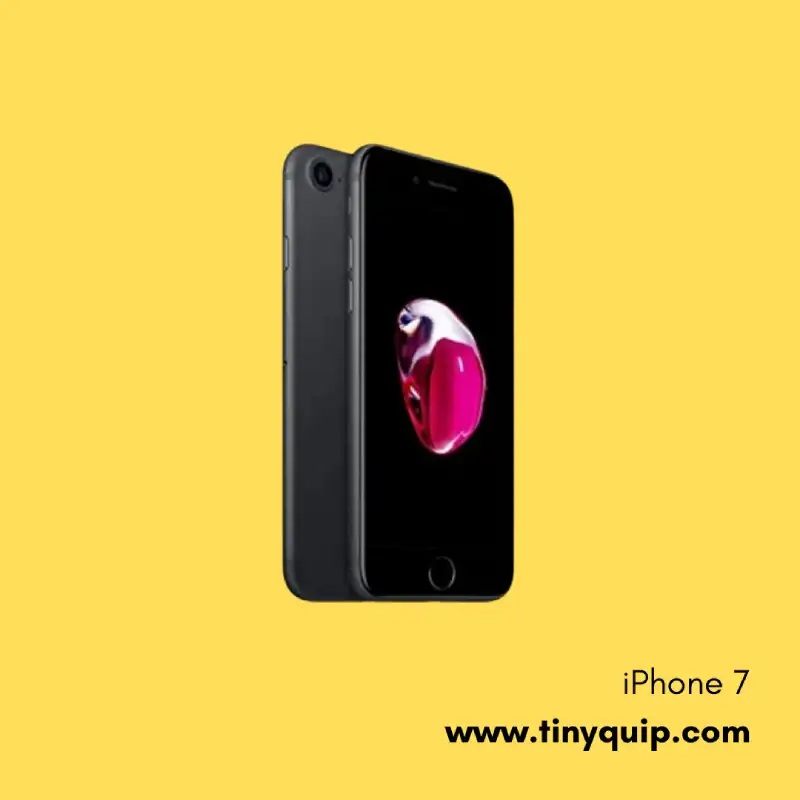
Specifications
- Camera (Rear: 12.2 megapixels, Front: 7 megapixels)
- Storage: 32/128/256 GB
- Battery: 1960 mAh
- RAM: 2 GB
- Processor: T8010 “A10” (Core Design: Apple Fusion x 2, CPU Speed: 2.34 GHz)
iPhone 7 was the first Apple device with no 3.5mm jack; this was when Apple replaced the wired earphones with AirPods. By far, this has been one of the best things that happened to Apple. The design change was also not limited to the earphone jack; the iPhone 7 was made with better water and dust resistance capabilities and a different home button. If you closely look at the home button on previous iPhones, you can feel the difference; the home button was now more pressure-sensitive, which made fingerprint authentication a better feature and resisted the damaging of home buttons, which was a big headache for Apple before the iPhone 7.
15. iPhone 7 Plus

Specifications
- Camera: Rear: 2×12.2 megapixels, Front: 7 megapixels
- Storage: 32/128/256 GB
- Battery: 2900 mAh
- RAM: 3 GB
- Processor: T8010 “A10” (Core Design: Apple Fusion x 2, CPU Speed: 2.34 GHz)
Apple has constantly been improving the iPhone lineup, and there is no better thing than change. The iPhone 7 Plus featured the same design specifications as the iPhone 7 but with a better processor and camera quality. To boost the camera specs, Apple included a dual camera at the back of their iPhone for the very first time. Besides, the iPhone 7 Plus was much faster than Apple had until now; it recorded a 40% increase in speed compared to the iPhone 6 lineup.
Also Read: How to Make a Live Photo into Video on iPhone & iPad
16. iPhone 8

Specifications
- Camera: Rear: 12.2 megapixels, Front: 7 megapixels
- Storage: 64/256 GB
- Battery: 1821 mAh
- RAM: 2 GB
- Processor: T8015 “A11” (Core Design: Apple Monsoon x 2 and Apple Mistral x 4, CPU Speed: 2.39 GHz)
iPhone 8 brought significant changes to the iPhones in comparison to the previous models in the list. It was more visually appealing with glass bodies and a bunch of other features. With the iPhone 8, Apple also launched the latest version of the iOS 10 in the same year, which featured a 3D touch. All the other iPhone devices supporting the iOS 10 were compatible with this feature. The iPhone 8 also featured maximized performance, camera improvements, and not to miss the true tone technology and wireless charging features. iPhone 8 was one of the first devices to support wireless charging.
Another significant change Apple made to its iPhone lineup with the iPhone 8 was depleting the 32GB Storage space. iPhone 8 was only available in 64/128GB storage models.
17. iPhone 8 Plus
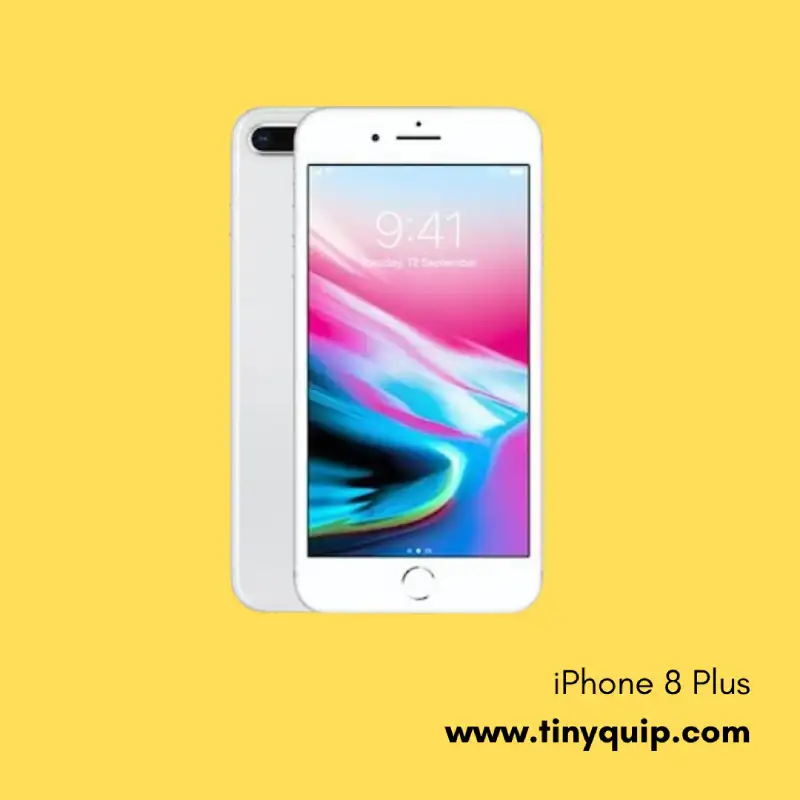
Specifications
- Camera – Rear: 2×12.2 megapixels, Front: 7 megapixels
- Storage: 64/256 GB
- Battery: 2691 mAh
- RAM: 3 GB
- Processor: T8015 “A11” (Core Design: Apple Monsoon x 2 and Apple Mistral x 4, CPU Speed: 2.39 GHz)
With better camera optimizations, performance boost, and image signal processing (Thanks to the A11 Bionic chip), the iPhone 8 saw a major demand in the smartphone industry.
iPhone 8 Plus was launched alongside the iPhone 8 and replicated the same design. Again, the idea was to improve the system performance and give a better experience to the users. It also featured low-light photography, which was fanciedby Android devices back then. iPhone 8 also came with an increase in RAM size; this ensured the iPhone 8 was faster than the previous iPhone models in the list.
18. iPhone X
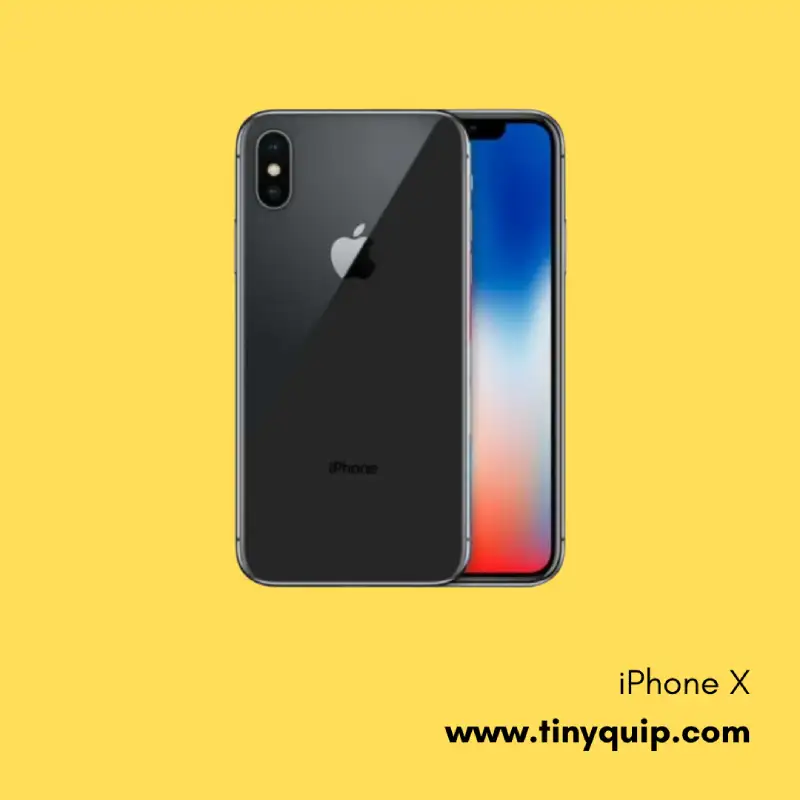
Specifications
- Camera – Rear: 2×12.2 megapixels, Front: 7 megapixels
- Storage: 64/256 GB
- Battery: 2716 mAh
- RAM: 3 GB
- Processor: T8015 “A11” (Core Design: Apple Monsoon x 2 and Apple Mistral x 4, CPU Speed: 2.39 GHz)
iPhone X came with major design changes that said goodbye to the home button. With the iPhone X, Apple redesigned the iPhone; earlier, they had only removed the earphone jack, and with the iPhone X, they had also removed the home button. The users could find more screen space as there was less body-to-screen ratio and a large 5.8-inch OLED display. With the home button gone, the iPhone X took away the fingerprint sensor. So, what was the best way to unlock your iPhone? Facial recognition was introduced, which made unlocking your iPhone X quick and secure.
19. iPhone XR
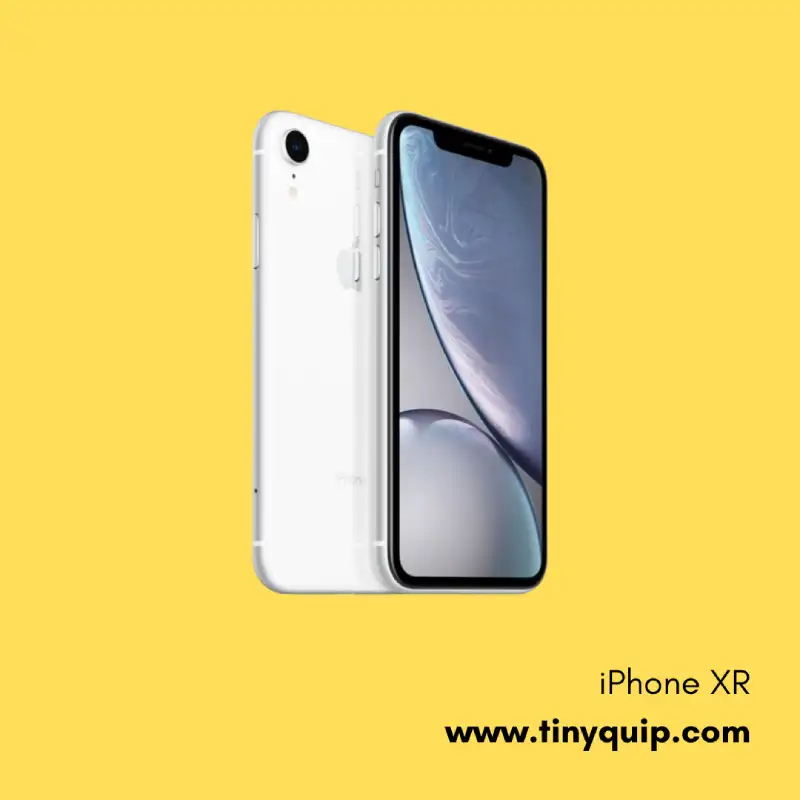
Specifications
- Camera – Rear: 12.2 megapixels, Front: 7 megapixels
- Storage: 64/128/256 GB
- Battery: 2942 mAh
- RAM: 3 GB
- Processor: T8020 “A12 Bionic” (Core Design: Apple Vortex x 2 and Apple Tempest x 4, CPU Speed: 2.49 GHz)
iPhone XR is one of the budget-friendly iPhones made specifically for consumers who wanted to buy Apple but could not afford it as the prices for iPhones were shooting up. The design was similar to the iPhone X and included facial recognition and the low body to screen ratio. However, iPhone XR does not include the OLED screen; Apple replaced the screen with LCD with support for 120Hz touch sensing.
20. iPhone XS
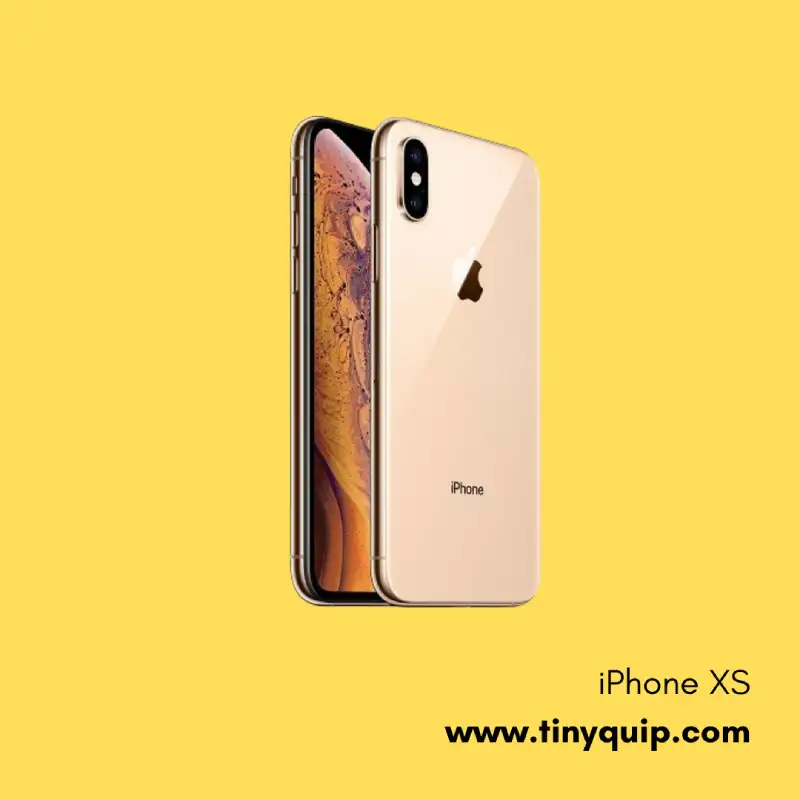
Specifications
- Camera – Rear: 2×12.2 megapixels, Front: 7 megapixels
- Storage: 64/256/512 GB
- Battery: 2658 mAh
- RAM: 4 GB
- Processor: T8020 “A12 Bionic” (Core Design: Apple Vortex x 2 and Apple Tempest x 4, CPU Speed: 2.49 GHz)
Apple was too quick to stop the production of the iPhone X series, but it was loaded with massive changes, which were highlighted in the list of iPhone models. It had the sharpest OLEDs, Dolby vision, True depth camera system and enhanced FaceID. However, there were a lot of hardware challenges, and Apple had to stop production even before launching the next two iPhones, which was not typical Apple style.
21. iPhone XS Max

Specifications
- Camera (Rear: 2×12.2 megapixels, Front: 7 megapixels)
- Storage: 64/256/512 GB
- Battery: 2658 mAh
- RAM: 4 GB
- Processor: T8020 “A12 Bionic” (Core Design: Apple Vortex x 2 and Apple Tempest x 4, CPU Speed: 2.49 GHz)
Apple previously allowed only a single SIM slot on their iPhones, be it any iPhone Model on the list, but the Apple iPhone XS Max changed the tradition. With the iPhone XS Max, Apple introduced dual SIM and a larger screen display (6.5′), which made a significant change. This was one of the largest screen sizes offered by Apple. It was one of the most powerful iPhones because of the A12 Bionic chip featuring 4-cores and efficient performance. Later, with the iPhone 14 Pro models, Apple allowed the use of E-sim and introduced dual physical sim slots with the 15 series in the US.
22. iPhone 11
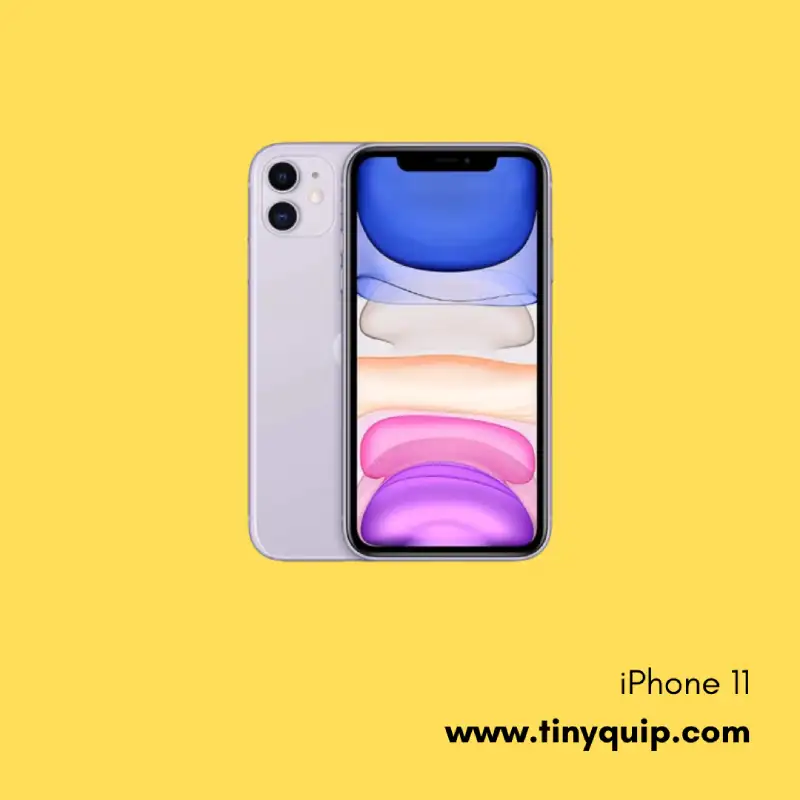
Specifications
- Camera (Rear: 12 Megapixels, Front: 12 Megapixels)
- Storage: 64/256/512 GB
- Battery: 3110 mAh
- RAM: 4 GB
- Processor: T8030 “A13 Bionic” (Core Design: Apple Lightning x 2 and Apple Thunder x 4, CPU Speed: 2.65 GHz)
iPhones have been known for constant camera improvements, and the iPhone 11 started a new phase of camera setup in iPhones. It features a standard wide-angle lens and an ultra-wide-angle lens. However, most of its competitors, such as Samsung, Xiaomi, and OnePlus, have Telephoto lenses, which was a major backslash for iPhones.
With the iPhone 11, Apple also reconsidered the body material and added the haptic touch feature, which was supported along with all the IOS 13 devices. They claim it to be one of the toughest glasses and, yes, improved splash-resistance.
23. iPhone 11 Pro
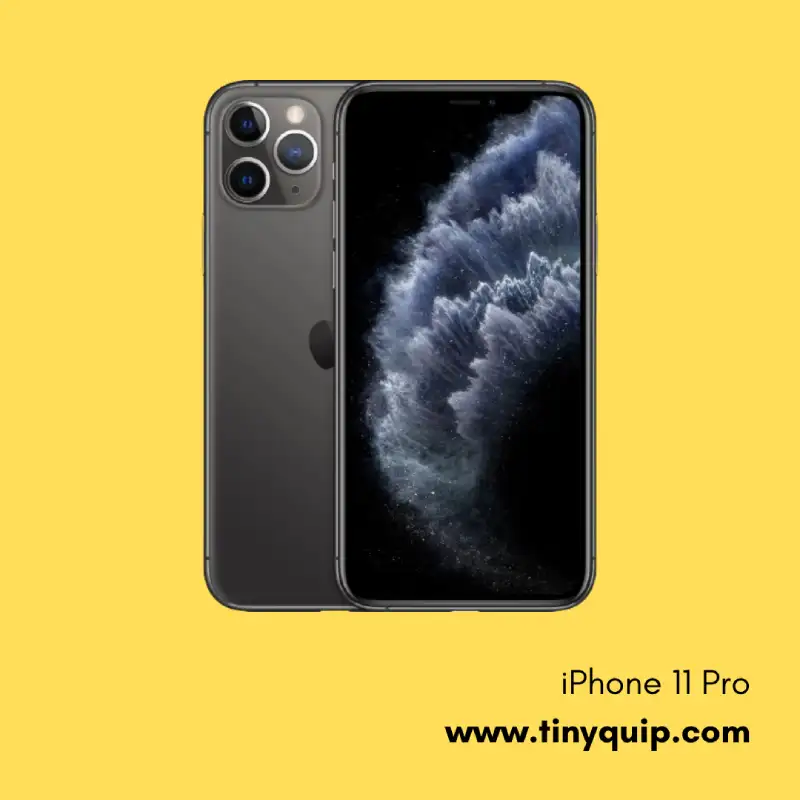
Specifications
- Camera (Rear: 12-Megapixels (x3), Front: 12-Megapixels)
- Storage: 64/256/512 GB
- Battery: 3046 MAH
- RAM: 4 GB
- Processor: T8030 “A13 Bionic” (Core Design: Apple Lightning x 2 and Apple Thunder x 4, CPU Speed: 2.65 GHz)
Apart from these camera specifications, apple moved from a glassy body to a soft textured material that made iPhone 11 Pro more comfortable to use.
iPhone 11 Pro was one of the most used iPhone devices before the iPhone 12, and it was the first time that Apple introduced three cameras to their iPhone (Introducing the Telephoto lens). Besides, the task was to make each camera capable of recording high-definition videos and allowing ultra-wide-angle pictures.
24. iPhone 11 Pro Max
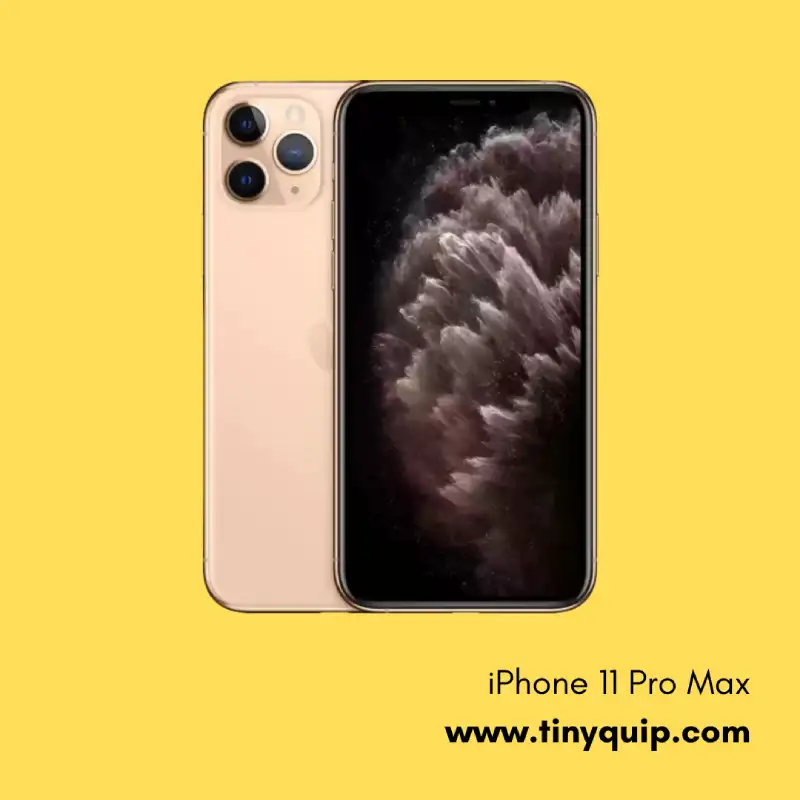
Specifications
- Camera (Rear: 12 MP, Front: 12 MP)
- Storage: 64/256/512 GB
- Battery: 3969 mAh
- RAM: 4 GB
- Processor: T8030 “A13 Bionic” (Core Design: Apple Lightning x 2 and Apple Thunder x 4, CPU Speed: 2.65 GHz)
iPhone 11 Pro Max is the successor of the iPhone 11 Pro with a larger battery backup and camera optimizations. Additionally, the iPhone 11 Pro Max was also tested to be better at water and dust resistance and was certified to withhold a maximum depth of 4 meters. iPhone 11 Pro Max also has better performance and has been tested to be one of the best phones overall. Despite the water resistance, you need to understand the IPXX rating, as it also signifies splash, wash, and dip resistance in the water, and if your iPhone is water damaged, Apple will not let you claim any warranty.
25. iPhone SE [2020]
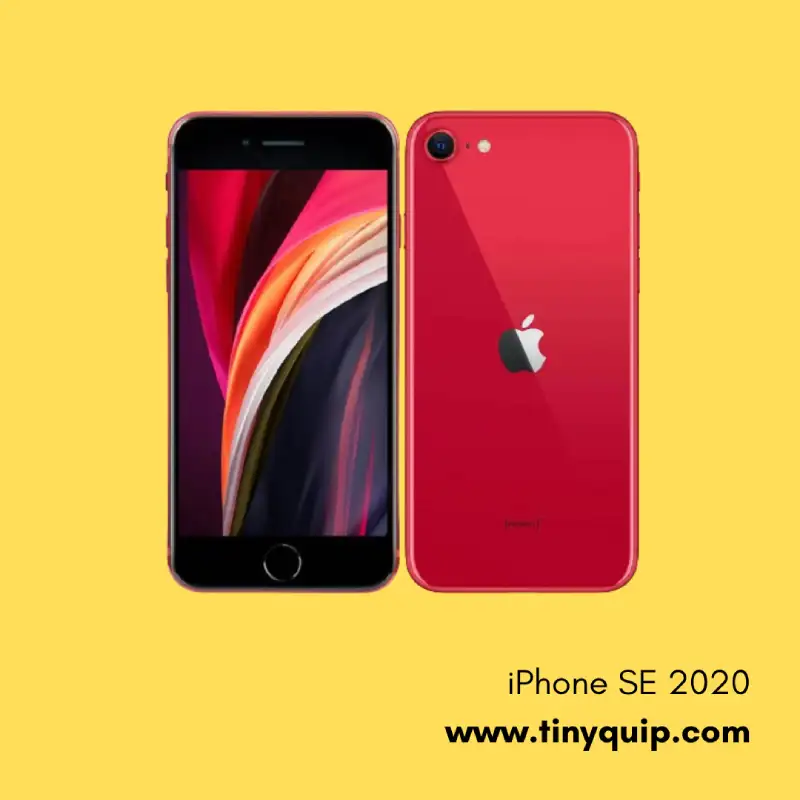
Specifications
- Camera (Rear: 12 MP, Front: 12 MP)
- Storage: 64/256/512 GB
- Battery: 1821 mAh (50% in 30 minutes)
- RAM: 4 GB
- Processor: Apple A13 Bionic Hexa Core
iPhone SE was one of Apple’s popular releases, which contrasted with the re-release of an older design. The iPhone SE [2020] resembled the older design with a home button and thicker bezels. The iPhone SE 2020 is a remodeled version of the original iPhone SE, which stood out in terms of performance as Apple replaced the Apple A9 chip with the Apple A13. There were also other improvements with the interface, the camera system, and battery pick-up in the same comparison.
26. iPhone 12 Mini

Specifications
- Camera (Rear: 12 MP, Front: 12 MP)
- Storage: 64/256/512 GB
- Battery: 2,227 mAh
- RAM: 4 GB
- Processor: T8101 “A14 Bionic (Core Design: Apple Firestorm x 2 and Apple Icestorm x 4)
iPhone 12 Mini is one of Apple’s innovations that changed the iPhone trends. The iPhone 12 Mini was specifically made for smaller hands and better cameras. The image stabilization of the iPhone 12 Mini makes it one of the smaller mobile phones with impressive camera quality.
Besides, iPhone 12 Mini also reduced the number of cameras to two (Wide-angle camera and Ultra-wide-angle camera). With much better image stabilization, the iPhone 12 Mini was one of the strongest competitors to the top-mid range Android flagship phones.
27. iPhone 12

Specifications
- Camera (Rear: 12 MP (x2), Front: 12 MP)
- Storage: 64/256/512 GB
- Battery: 2,815 mAh
- RAM: 4 GB
- Processor: T8101 “A14 Bionic (Core Design: Apple Firestorm x 2 and Apple Icestorm x 4)
iPhone 12 is one of the most sold iPhone models ever since the iPhone 6S. Recently, Apple iPhone 12 also crossed 100 million sales which was a huge success. Being a successor to the iPhone 11, the iPhone 12 had to be the best, and it did with a super XDR OLED display screen and an edge-to-edge design. Inspired by the iPhone 5C, the iPhone 12 was also launched with in several colours, and these colours were more subtle and gradient.
28. iPhone 12 Pro
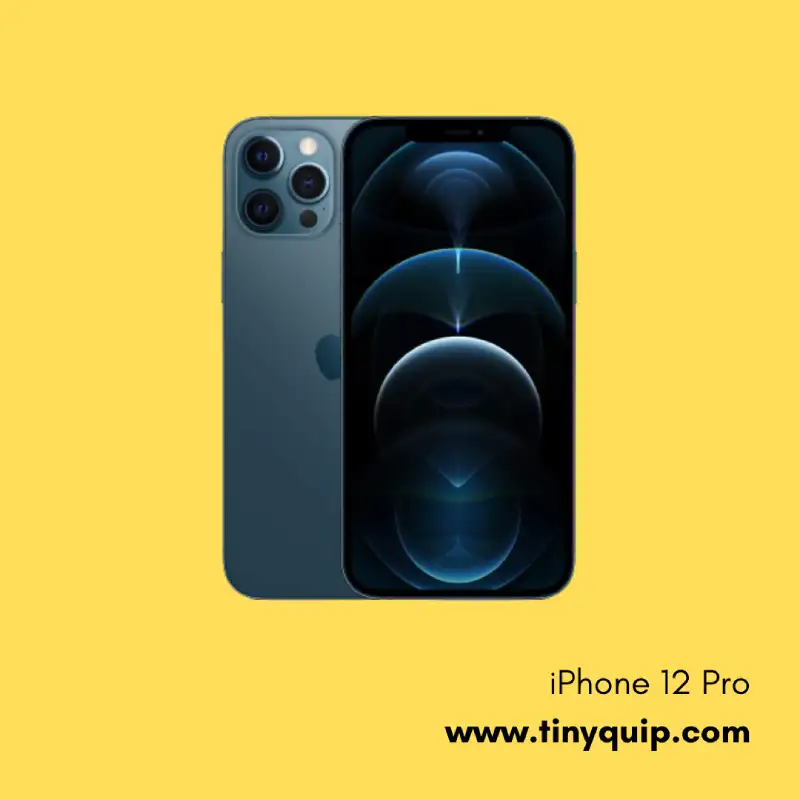
Specifications
- Camera (Rear: 12 MP (x3), Front: 12 MP)
- Storage: 128/256/512 GB
- Battery: 2,815 mAh
- RAM: 6 GB
- Processor: T8101 “A14 Bionic” (Core Design: Apple Firestorm x 2 and Apple Icestorm x 4)
Apple entered the 5G smartphone zone with iPhone 12 Pro. The device was truly an Apple premium product with better gaming, video streaming, and higher definition 1080p Facetime calls. Since two years of it’s launch, it was still one of the most used iPhones ever and featured top performance in every aspect.
29. iPhone 12 Pro Max

Specifications
- Camera (Rear: 12 MP (x3), Front: 12 MP)
- Storage: 128/256/512 GB
- Battery: 3,687 mAh
- RAM: 4 GB
- Processor: T8101 “A14 Bionic” (Core Design: Apple Firestorm x 2 and Apple Icestorm x 4)
iPhone 12 Pro Max is the larger version of the iPhone 12 Pro, supporting 10-bit color depth imagery in HDR video. It had a larger display with three cameras and better support for video-related activities. Apple shipped the iPhone 12 Pro Max in four colors – graphite, silver, gold, and pacific blue. The pacific blue color was one of the most demanded iPhone 12 Pro Max as Apple was finally breaking the color scheme after a long time. The iPhone 12 Pro Max was one of the most sold in this list of iPhone models during its launch till a few years later.
30. iPhone 13
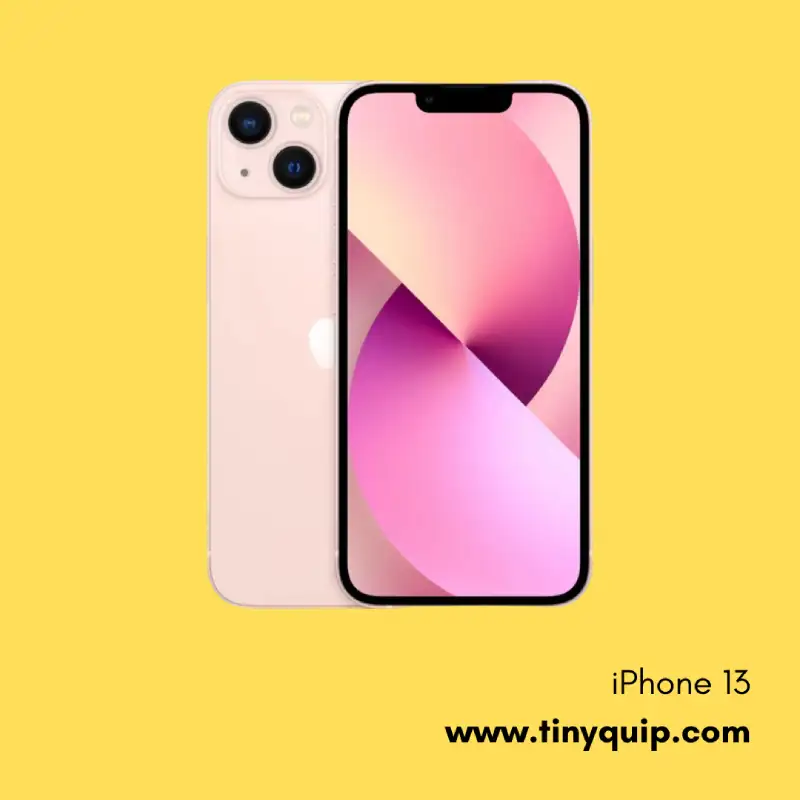
Specifications
- Camera (Rear: 12 MP (x2), Front: 12 MP)
- Storage: 128/256/512 GB
- Battery: 3,240 mAh
- RAM: 4 GB
- Processor: A15 Bionic chip (6‑core CPU with two performance and four efficiency cores, 4‑core GPU, 16‑core Neural Engine)
There were a lot of performance improvements on the iPhone 13 series with the powerful A15 Bionic chip. Some of the other noticeable changes were the better cameras and bigger batteries, which lasted longer than what Apple claimed.
Let’s talk about the camera; Apple was doing wonders with its camera system, and every year, you could find more delightful and appealing cameras that were on the verge of bringing professional cameras right to your smartphone. Additionally, much better night mode photography and cinematography were available in all of the iPhone 13 series in comparison to its predecessors, which made it the best camera of its time.
31. iPhone 13 Mini
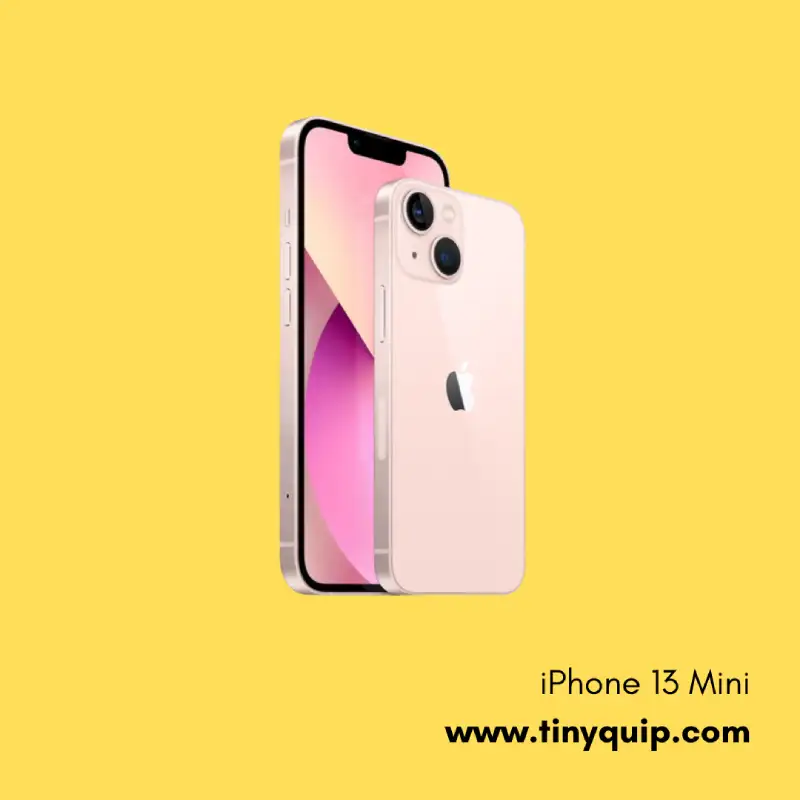
Specifications
- Camera (Rear: 12 MP (x2), Front: 12 MP)
- Storage: 128/256/512 GB
- Battery: 2,438 mAh
- RAM: 4 GB
- Processor: A15 Bionic chip (6‑core CPU with two performance and four efficiency cores, 4‑core GPU)
iPhone 13 Mini was as close to being the iPhone 13 base model with only a difference in size and battery capacity. On the iPhone 13 mini, you get a battery capacity of 2,438 mAh, which is sufficient for browsing or normal use.
The mini size made it easy to carry the device on the go, and it sat comfortably in your pockets and backpacks. The other performance and GPU specifications were the same as that of the iPhone 13, which signifies there was no compromise in powerful performance despite paying a little less than the higher models in the iPhone 13 series.
32. iPhone 13 Pro
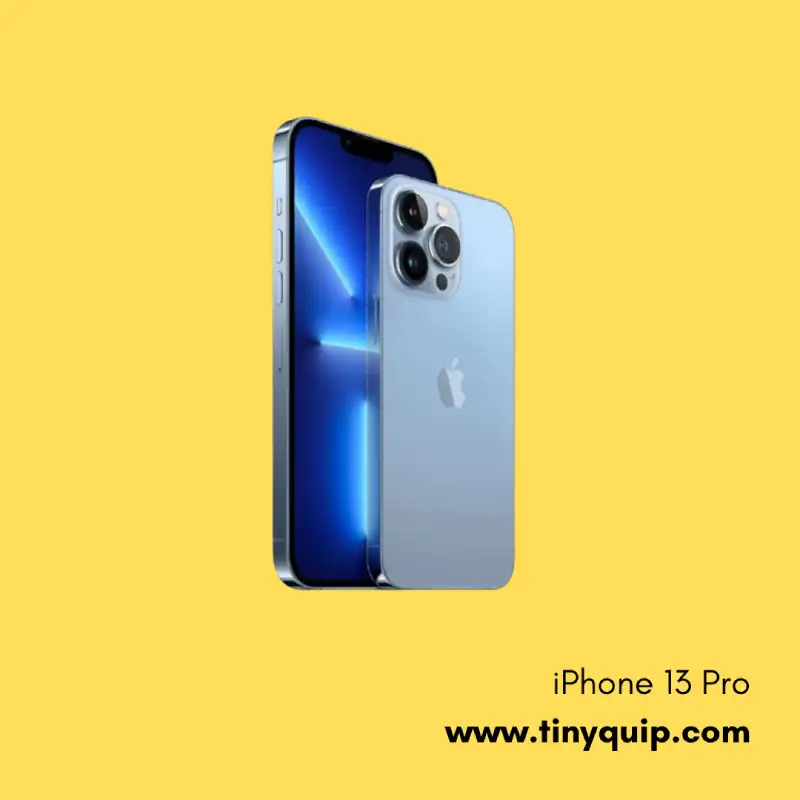
Specifications
- Camera (Rear: 12 MP (x3), Front: 12 MP)
- Storage: 128/256/512 GB, 1 TB
- Battery: 3,095 mAh
- RAM: 4 GB
- Processor: A15 Bionic chip (6‑core CPU with two performance and four efficiency cores, 5‑core GPU, 16‑core Neural Engine)
iPhone 13 Pro and iPhone 13 Pro Max were two of the most powerful devices that Apple had ever made since 2007 during their launch. For camera improvements, the iPhone 13 Pro had three super-stabilized cameras and two cameras compared to the newer iPhone 13 and iPhone 13 mini. Additionally, there was an increase in the storage space, giving you an option for 1TB, which would be great if you were into vlogging, photo editing, cinematography, and more storage-intensive jobs.
33. iPhone 13 Pro Max

Specifications
- Camera (Rear: 12 MP (x3), Front: 12 MP)
- Storage: 128/256/512 GB, 1 TB
- Battery: 4352 mAh
- RAM: 4 GB
- Processor: A15 Bionic chip (6‑core CPU with two performance and four efficiency cores, 5‑core GPU, 16‑core Neural Engine)
iPhone 13 Pro Max was a total beast when the talks were about battery in the entire list of iPhone Models since the first ever iPhone; it featured a longer battery life so you could do your jobs, travel around, and focus on your life more than worrying about juicing up your iPhone.
The CPU specifications were the same as that of the iPhone 13 Pro with the 5-core GPU and the 6-core CPU performance. The hype with iPhone 13 Pro Max was all about the advanced camera and stabilizations which made it perfect in during it’s launch. Apple’s move opened up an opportunity for new cinematographers. Later, a much better and more dedicated cinematography feature came with the iPhone 14 series, which forced videographers and cinematographers to ditch their high-end cameras and shoot videos with their iPhones.
34. iPhone SE (3rd Generation)

Specifications
- Camera (Rear: 12 MP, Front: 7 MP)
- Storage: 64/128/256 GB
- Battery: 2018 mAh
- RAM: 4 GB
- Processor: A15 Bionic chip (6-core CPU with two performance and four efficiency cores, 4-core GPU, 16-core Neural Engine)
The iPhone SE (3rd Generation) was introduced as a more budget-friendly option while still offering powerful performance. It features the same A15 Bionic chip found in the iPhone 13 series, providing excellent speed and efficiency. The design is similar to the iPhone 8 with a physical home button and Touch ID. Despite its lower price point, the SE (3rd Generation) supports 5G and offers substantial improvements in battery life and camera performance compared to its predecessor. The iPhone SE (3rd Generation) is an ideal choice for those who prefer a smaller phone with classic features and robust performance.
35. iPhone 14
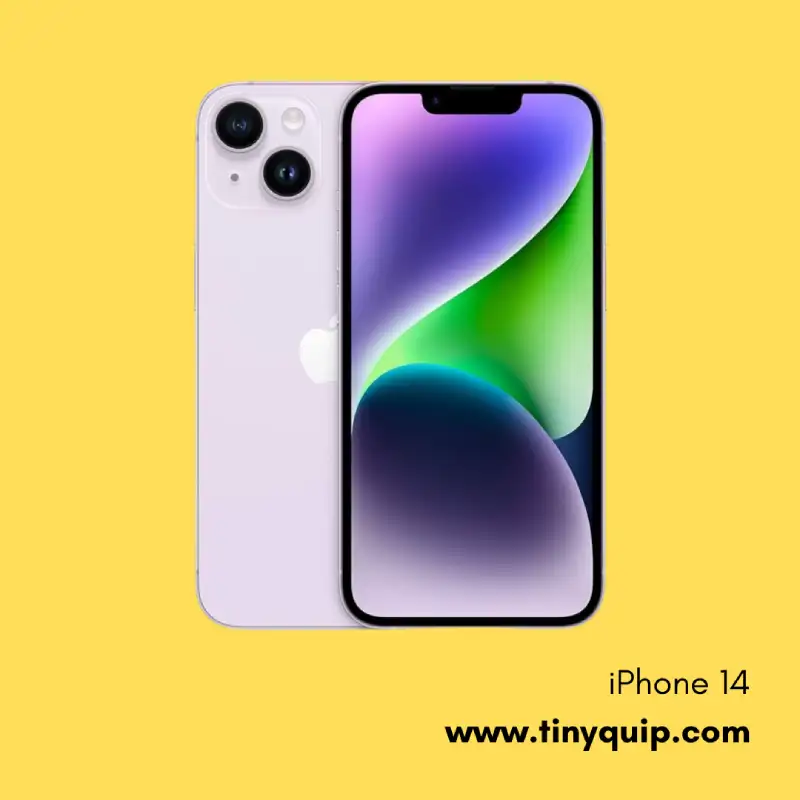
Specifications
- Camera (Rear: 12 MP (x2), Front: 12 MP)
- Storage: 128/256/512 GB
- Battery: 3,279 mAh
- RAM: 4 GB
- Processor: A16 Bionic chip (6-core CPU with two performance and four efficiency cores, 5-core GPU, 16-core Neural Engine)
The iPhone 14 brought significant advancements in performance and camera capabilities. With the A16 Bionic chip, it provided enhanced speed and efficiency. The camera system included improved low-light performance and new computational photography features. The iPhone 14 also introduced satellite communication for emergency situations, a first for smartphones. This model maintained the design aesthetics of the iPhone 13 but offered subtle improvements in durability and battery life.
36. iPhone 14 Plus
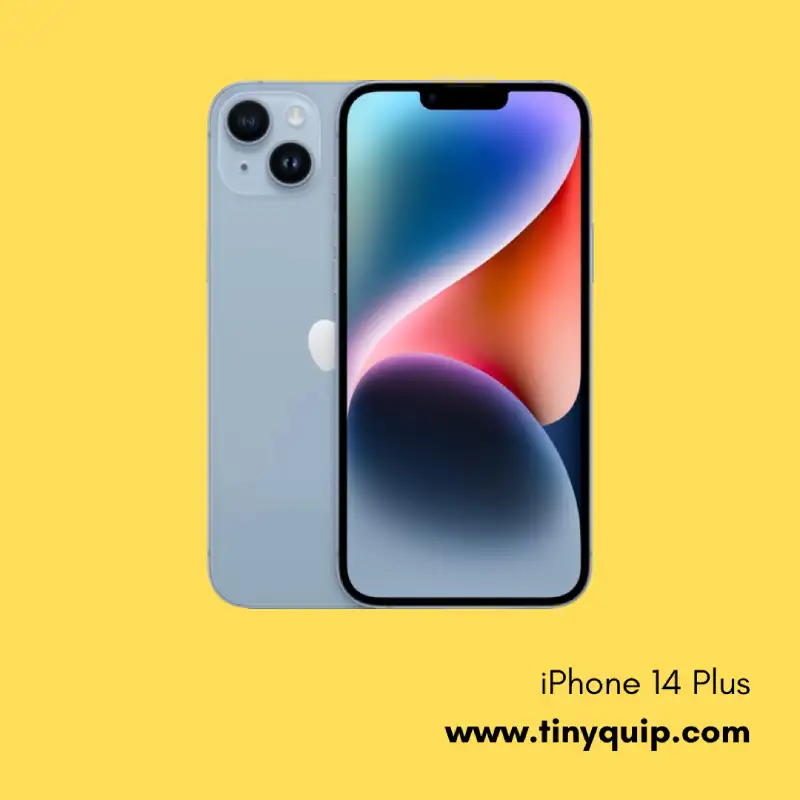
Specifications
- Camera (Rear: 12 MP (x2), Front: 12 MP)
- Storage: 128/256/512 GB
- Battery: 4,325 mAh
- RAM: 4 GB
- Processor: A16 Bionic chip (6-core CPU with two performance and four efficiency cores, 5-core GPU, 16-core Neural Engine)
The iPhone 14 Plus was introduced as a larger alternative to the iPhone 14, featuring a bigger display and battery. It offered the same performance and camera capabilities as the iPhone 14 but with enhanced screen real estate and longer battery life, making it an excellent choice for media consumption and productivity.
37. iPhone 14 Pro
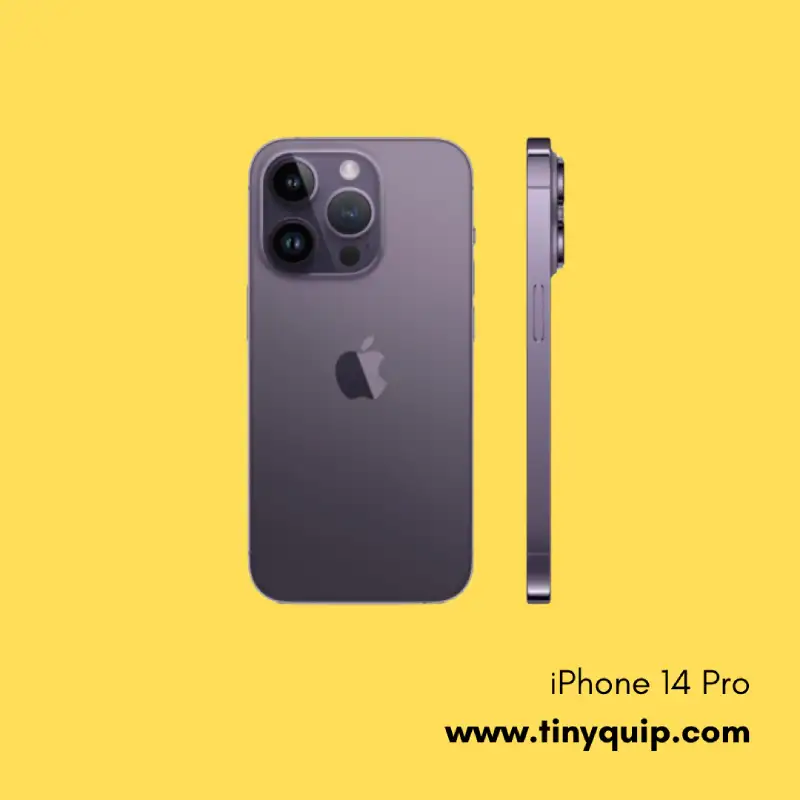
Specifications
- Camera (Rear: 48 MP (main), 12 MP (ultrawide), 12 MP (telephoto), Front: 12 MP)
- Storage: 128/256/512 GB, 1 TB
- Battery: 3,200 mAh
- RAM: 6 GB
- Processor: A16 Bionic chip (6-core CPU with two performance and four efficiency cores, 5-core GPU, 16-core Neural Engine)
The iPhone 14 Pro introduced a 48 MP main camera, significantly enhancing photo and video quality. The ProMotion display with adaptive refresh rates up to 120Hz provided a smoother user experience. The A16 Bionic chip delivered unmatched performance, and new software features like an always-on display and improved cinematic mode made the iPhone 14 Pro a favorite among professionals and tech enthusiasts.
38. iPhone 14 Pro Max

Specifications
- Camera (Rear: 48 MP (main), 12 MP (ultrawide), 12 MP (telephoto), Front: 12 MP)
- Storage: 128/256/512 GB, 1 TB
- Battery: 4,352 mAh
- RAM: 6 GB
- Processor: A16 Bionic chip (6-core CPU with two performance and four efficiency cores, 5-core GPU, 16-core Neural Engine)
The iPhone 14 Pro Max offered all the features of the iPhone 14 Pro but with a larger display and battery, providing an even more immersive experience. It was particularly popular among users who valued screen size for gaming and media consumption. The advanced camera system and enhanced battery life made it a powerhouse in the smartphone market.
39. iPhone 15

Specifications
- Camera (Rear: 48 MP (main), 12 MP (ultrawide), Front: 12 MP)
- Storage: 128/256/512 GB
- Battery: 3,500 mAh
- RAM: 6 GB
- Processor: A17 Bionic chip (6-core CPU with two performance and four efficiency cores, 5-core GPU, 16-core Neural Engine)
iPhone 15 continued to push the boundaries with the new A17 Bionic chip, offering superior performance and efficiency. The main camera was upgraded to 48 MP, improving overall image quality and low-light performance. The design was slightly refreshed with more durable materials and a new color palette.
Also Read: MagEZ Slider Review | The Best 4-in-1 Wireless Charger for Apple?
40. iPhone 15 Plus
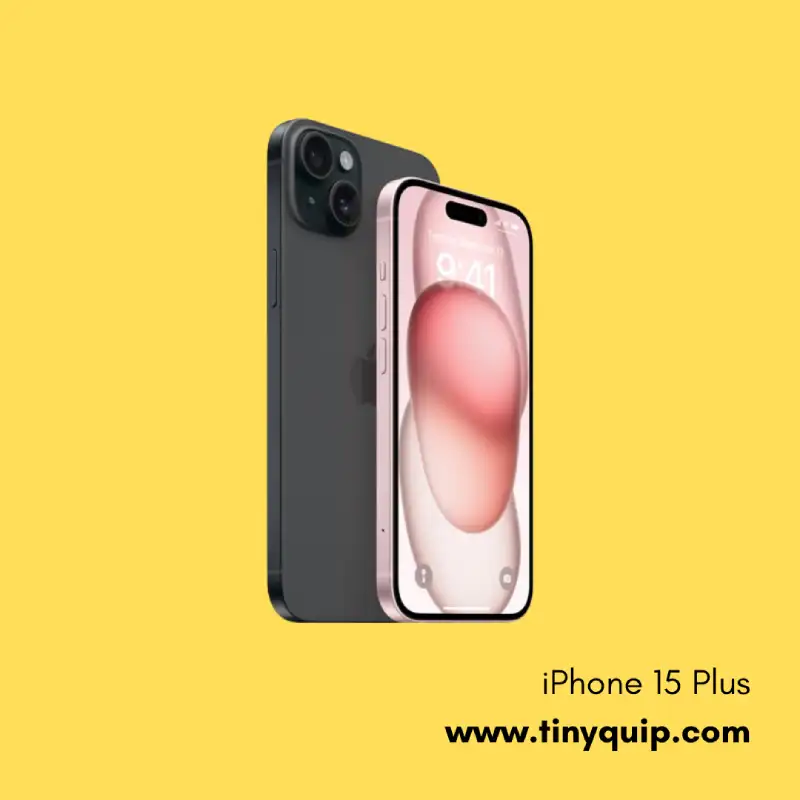
Specifications
- Camera (Rear: 48 MP (main), 12 MP (ultrawide), Front: 12 MP)
- Storage: 128/256/512 GB
- Battery: 4,700 mAh
- RAM: 6 GB
- Processor: A17 Bionic chip (6-core CPU with two performance and four efficiency cores, 5-core GPU, 16-core Neural Engine)
The iPhone 15 Plus offered the same features as the iPhone 15 but with a larger display and battery, catering to users who preferred bigger screens and longer battery life. It was designed for those who needed more screen space for productivity and entertainment.
41. iPhone 15 Pro

Specifications
- Camera (Rear: 48 MP (main), 12 MP (ultrawide), 12 MP (telephoto), Front: 12 MP)
- Storage: 128/256/512 GB, 1 TB
- Battery: 3,500 mAh
- RAM: 8 GB
- Processor: A17 Pro chip (8-core CPU with four performance and four efficiency cores, 6-core GPU, 20-core Neural Engine)
The iPhone 15 Pro featured the A17 Pro chip, setting new benchmarks for smartphone performance. The camera system was further enhanced with advanced computational photography and ProRAW capabilities. The device also introduced new materials (Titanium alloy) for increased durability and a refined design that made it the most premium iPhone yet.
Also Read: The Pitaka MagEZ Case 4 for the iPhone 15 Series
42. iPhone 15 Pro Max
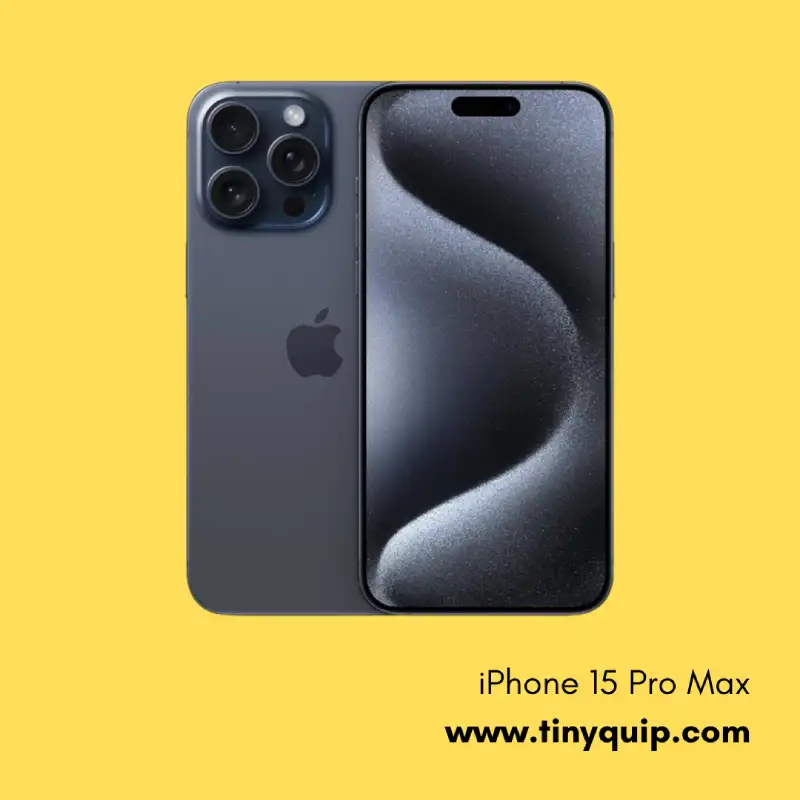
Specifications
- Camera (Rear: 48 MP (main), 12 MP (ultrawide), 12 MP (telephoto), Front: 12 MP)
- Storage: 128/256/512 GB, 1 TB
- Battery: 4,700 mAh
- RAM: 8 GB
- Processor: A17 Pro chip (8-core CPU with four performance and four efficiency cores, 6-core GPU, 20-core Neural Engine)
The iPhone 15 Pro Max combined all the features of the iPhone 15 Pro with a larger display and battery. It was the ultimate iPhone for those who wanted the best in performance, photography, and battery life. The advanced camera system, featuring enhanced optical zoom and macro capabilities, made it a favorite among photographers and videographers.
Rumors About the Upcoming iPhone 16 Lineup: September 2024
As anticipation builds for the upcoming iPhone 16 series, several intriguing rumors and leaks have surfaced about Apple’s next flagship device. Expected to be unveiled in September 2024, the iPhone 16 lineup promises significant advancements in both hardware and software.
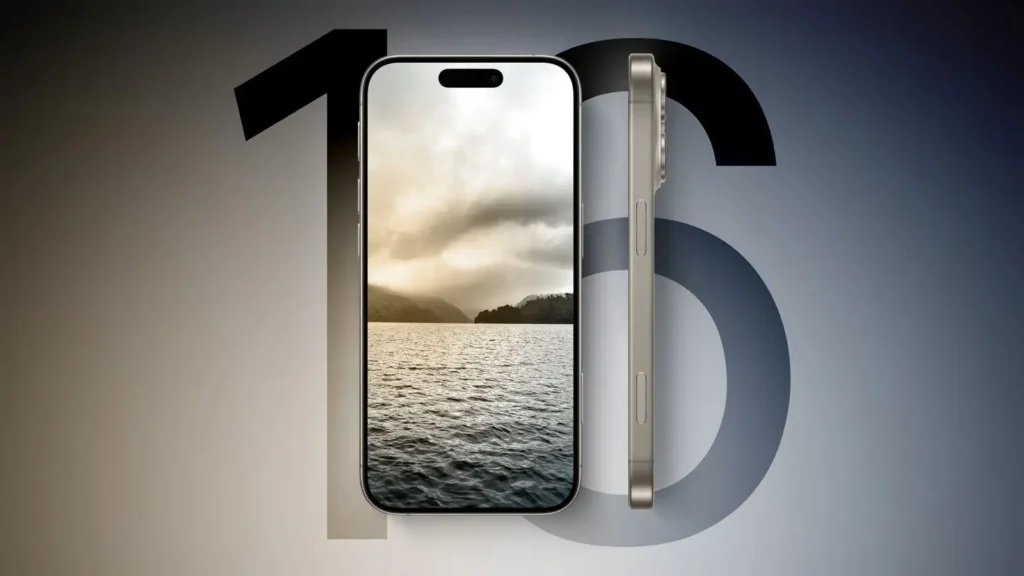
One of the standout features is the new A18 Pro chip, which will enhance the AI capabilities of the iPhone 16 Pro models. This chip is rumored to significantly increase the number of AI computing cores, boosting overall performance and efficiency. Another exciting development is the potential inclusion of a “Capture Button,” designed for enhanced camera functionality, likely making it easier to capture photos and videos on the go.
In terms of design, the iPhone 16 Pro and Pro Max are expected to feature larger displays, measuring 6.3 inches and 6.9 inches, respectively, with even slimmer bezels than their predecessors. Additionally, rumors suggest these models might incorporate a multi-lens array (MLA) AMOLED display, providing increased brightness and improved power efficiency.
The camera system on the Pro models is anticipated to receive significant upgrades, including an improved 48MP mainsensor and possibly a new periscope lens for enhanced optical zoom. These changes aim to solidify the iPhone’s reputation for excellent photography and videography capabilities.
Other expected features include solid-state buttons replacing traditional physical buttons across all models, enhanced Wi-Fi 6E support, and continued use of the USB-C port introduced in the iPhone 15 series.
Overall, the iPhone 16 series is shaping up to be another groundbreaking release from Apple, combining cutting-edge technology with user-friendly features to enhance the overall smartphone experience.
Most Frequently Asked Questions [FAQs]
The latest iPhone models as of 2024 are the iPhone 15 series, including the iPhone 15, iPhone 15 Plus, iPhone 15 Pro, and iPhone 15 Pro Max.
Apple has released over 40 iPhone models since the original iPhone debuted in 2007.
The iPhone 15 series introduces improvements in camera technology, a more powerful A17 Bionic chip, and enhanced durability with a new design. It also includes better battery life and advanced display technology compared to the iPhone 14 series.
The iPhone 15 Pro Max currently boasts the best camera system, featuring advanced computational photography, a new periscope lens for better optical zoom, and enhanced low-light performance.
Older iPhone models, such as the iPhone 12 and iPhone 13 series, still offer excellent performance and features at a more affordable price point. They remain a good choice for users who do not need the latest technology.
The iPhone SE is a budget-friendly model with a smaller form factor and less advanced hardware compared to the flagship iPhone models. It retains the physical home button and Touch ID.
Apple typically releases new iPhone models once a year, usually in September.
The Pro Max models usually feature a larger display and battery compared to the Pro models. Both have similar advanced features, but the Pro Max offers a slightly enhanced experience due to its larger size.
Before You Leave
Get Our Prime Content Delivered to your Inbox for Free!! Join the Ever-Growing Community… Right Now.
Give this article a quick share,
Wrapping up: Every iPhone Model Since 2007
This concludes the list of every iPhone model launched since 2007. From the humble beginnings of the original iPhone to the cutting-edge technology of the iPhone 15 Pro Max, Apple’s journey has been marked by innovation, design excellence, and a commitment to providing the best user experience. Whether you’re a longtime iPhone user or new to the ecosystem, there’s no denying the impact these devices have had on the world of technology.
Do you own an iPhone? Which is your favorite iPhone model from the list? Also, why? Let us know in the comment section. If you like this article, share it on your social media and tag us. Also, join our Telegram channel, Facebook page, and X to never miss a quick update.







